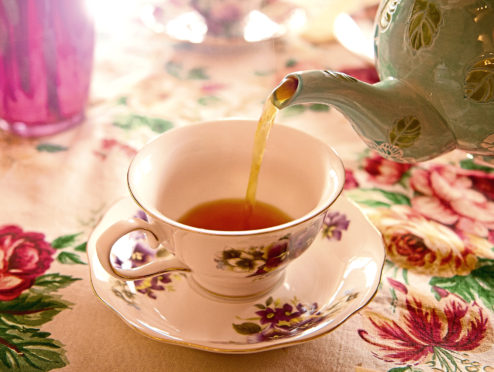
It can soothe a soul, bring warring sides together, and help you relax after a long day at the office – there’s nothing like a cuppa. Ahead of National Tea Day next Sunday, Kim Havelaar, founder of artisan tea brand Roqberry, tells Alice Hinds the Honest Truth about her brews
How did you first become interested in blending unusual teas?
Being a foodie, I’m always exploring new and exciting flavours from all over the world. It became clear to me that while a massive flavour evolution has taken place in the UK across food, alcohol and coffee, tea was lagging behind. I found that strange as tea in particular lends itself so well to mix with a range of herbs, spices, fruit and flowers. So I decided to create high-quality tea with big flavour profiles, inspired by global cuisine.
What’s the most exotic flavour you’ve ever tried?
On the way to becoming a tea sommelier I’ve tried many amazing teas I had no idea existed. This formed part of the inspiration to make these teas available to a wider audience. A prime example of this is milk oolong. This tea originated in Taiwan, and the “terroir” (everything about the environment including climate, geography, altitude etc) it grows in makes it naturally so creamy, it almost tastes like it contains milk.
Can tea be paired to meals as we would with wine?
Absolutely yes. The variety and versatility of tea lends itself perfectly to pair with meals. Tea has been consumed with meals as the drink of choice for centuries all over Asia and in the Middle East. Tea can be enjoyed hot or cold with a meal, and even made sparkling. The rule of thumb would be to make sure the meal and the tea are balanced and don’t overpower one another.Use lighter blends like green tea with lighter dishes like chicken and fish, and stronger teas like a bold Assam black with stronger dishes like beef or chocolate.
I suggest looking for a complementary taste, for example the hint of citrus in Earl Grey with smoked salmon, or the spice in a Chai with a Caribbean goat curry.
Does tea really have as much caffeine as coffee, or is that just a myth?
All tea contains caffeine (it’s a natural insecticide in the plant) while most herbal and fruit infusions will be caffeine-free. Interestingly, a kilo of tea contains more caffeine than a kilo of coffee. However, because you use far fewer grams of tea in a cup than you do coffee, on average a cup of tea is likely to contain about half the caffeine as coffee. The hotter (and longer) the tea is brewed, the more caffeine is drawn out of the leaf.
Are there any noted health benefits to herbal tea?
To be specific we have to distinguish between tea (containing actual tea leaves) and infusions (mixtures of herbs, spice, fruit and flowers but not containing actual tea leaves). The latter is often referred to as herbal tea. Actual “tea” contains antioxidants from the leaves, with the highest levels found in green tea. Infusions are naturally caffeine-free and health benefits depend entirely on the ingredients used. For example, turmeric is a potent anti-inflammatory and peppermint is said to aid digestion.
Why do you think we find a cup of tea so relaxing?
There’s something about holding a cup of something hot, whether it is soup, hot chocolate or tea, that feels nourishing.
Tea has the added benefit of containing L-theanine, an amino acid that reduces mental and physical stress and keeps us calm. So, we don’t just think it’s relaxing, it actually is. Lastly, I think tea has become such an important part of British culture, that having a “cuppa” is synonymous with taking some time out for yourself.
Visit roqberry.com

Enjoy the convenience of having The Sunday Post delivered as a digital ePaper straight to your smartphone, tablet or computer.
Subscribe for only £5.49 a month and enjoy all the benefits of the printed paper as a digital replica.
Subscribe